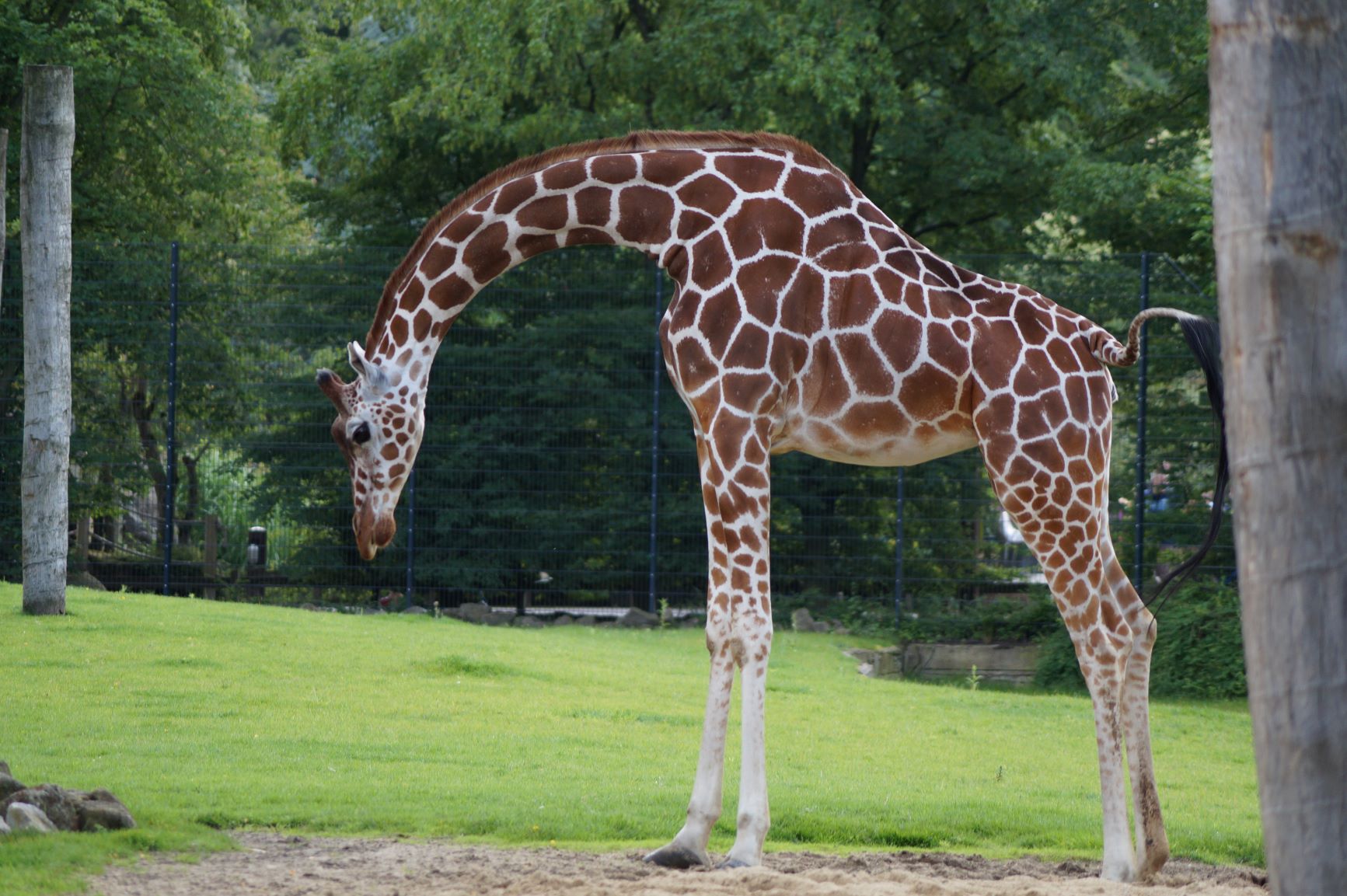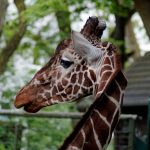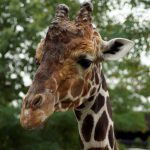CK: In Germany there only are five reticulated giraffe bulls left – three of them are in their final period of life, one has no cows around, and only the Serengeti Park Hodenhagen has a young stallion who realistically seen could breed. Will we have to say goodbye to reticulated giraffe births in Germany permanently?
JJ: As coordinator I always have the entire situation on mind, not any national borders. However, I do not think that we have to say goodbye to newborns forever. Yet due to their long gestation period of 15 months changes happen very slowly. Thus it can happen quite some time until reticulated giraffes are born on a regular base again in Germany.
- Maru at Zoo Cologne, third oldest reticulated giraffe bull in Germany, born 2001 in Copenhagen
- Kiriongo at Zoo Duisburg, Germany’s oldest reticulated giraffe bull, born 1999 in Munich
CK: In general recitulated giraffes are breeding very well, it would easily be possible to raise the number of animals in zoos, while the number of free living animals is going down more and more. This automatically leads to the question why there is no breeding to re-send giraffes to the wild.
JJ: At the moment the situation for releasing giraffes to the wild is not existing. As so often when population numbers in the wild are declining the situation has to be changed in a way that the threat is reduced or a safety area is created before this makes sense. We are working on this strategy at the moment and honestly said I hope that the number of giraffes in Africa can recover and be stabilized without the help of zoos. Nevertheless I coordinate the studbook in a way that zoos could help with genetically healthy animals if needed. At the moment I try to help that the situation of giraffes in Africa is changed into the positive without zoo releases.
CK: How big is your hope particularly for reticulated giraffes that the situation changes for the good? Realistically seen Kenya is the only country, which still has this species.
JJ: It is difficult to evaluate whether or not we can succeed in keeping up the wild population of reticulated giraffes. For sure we need to do everything we can to lower the threats and create safe areas for the animals. Only when this is succeeded we can judge on the situation and see if we need to support with zoo giraffes.
CK: Which further actions can be done from zoos to improve the situation in the wild?
JJ: In the last few years I promoted the cooperation between zoo and giraffe conservation in their natural habitats. Within our giraffe group we created a subgroup, which merely focuses on the topic of giraffe protection within Africa and tries to link it closer to the zoos. For example various research and conservation projects were evaluated with an enormous amount of time to recommend them to zoos as worthy to support. This close collaboration between in-situ and ex-situ protection remains one of the goals of the breeding program.
CK: At last, you are the studbook coordinator of the various giraffe subspecies and have worked with baringo giraffes in Gelsenkirchen and now in Kronberg. Does this subspecies automatically become kind of a favorite or would you be open to working with other subspecies in your daily routine?
JJ: It is true, baringo giraffes are accompanying me since taking over the role as studbook keeper. Still, I like the other subspecies as well and am fascinated by them. That way I enjoy it a lot when visiting colleagues who are working with other subspecies. Naturally it happens that I compare the specialties of these animals to “my” baringo giraffes. This does not happen due to being my favorites but rather because I see them every day when working in the zoo.


